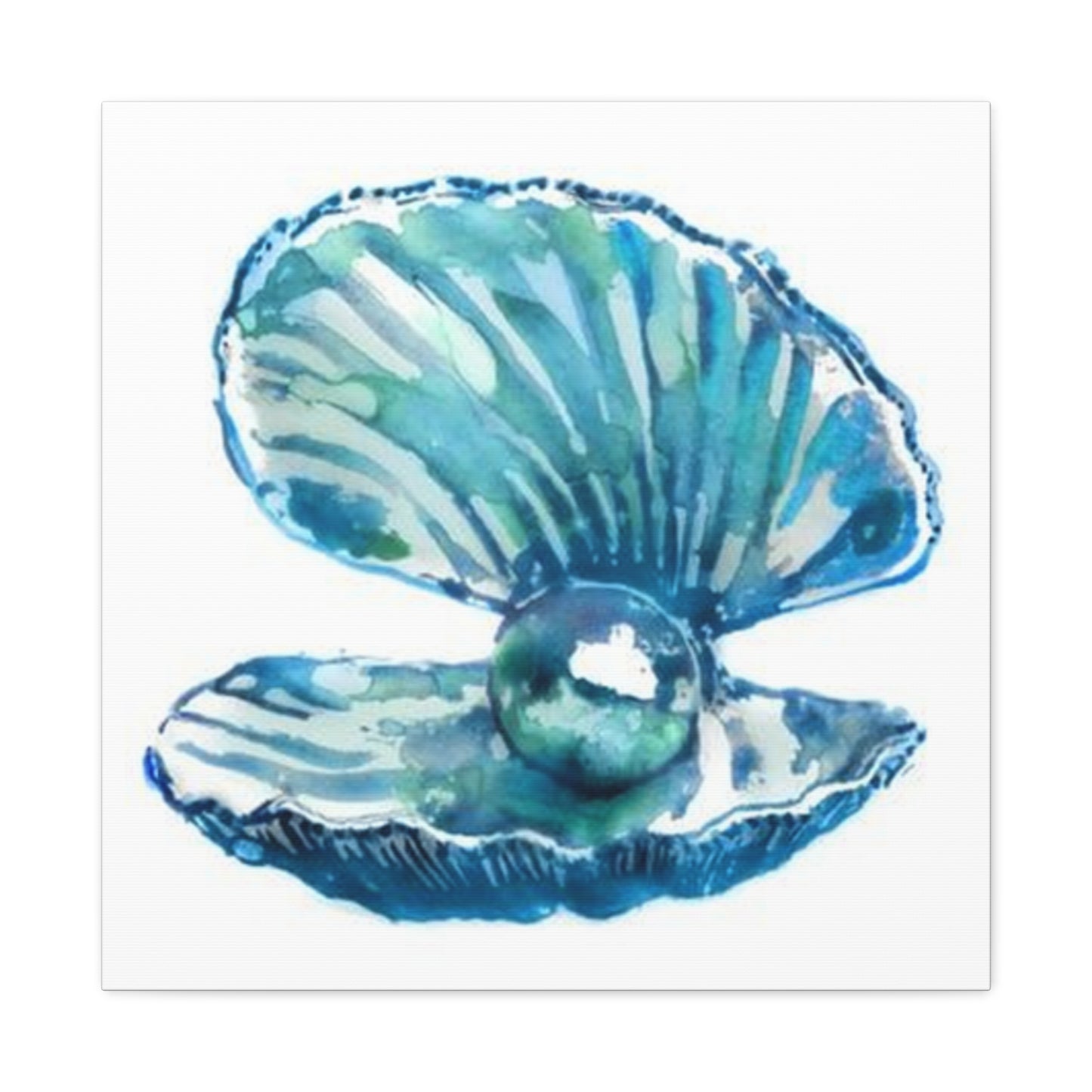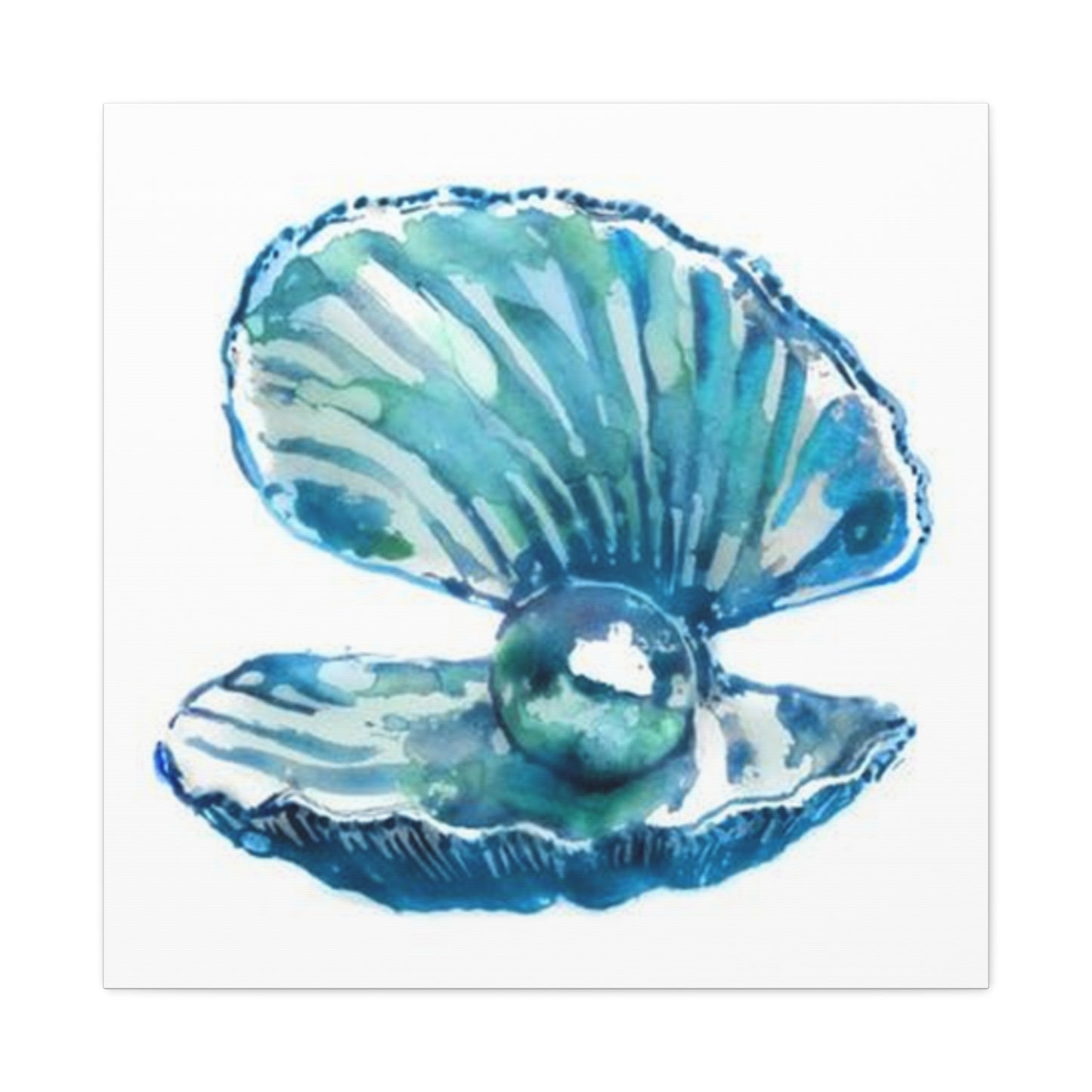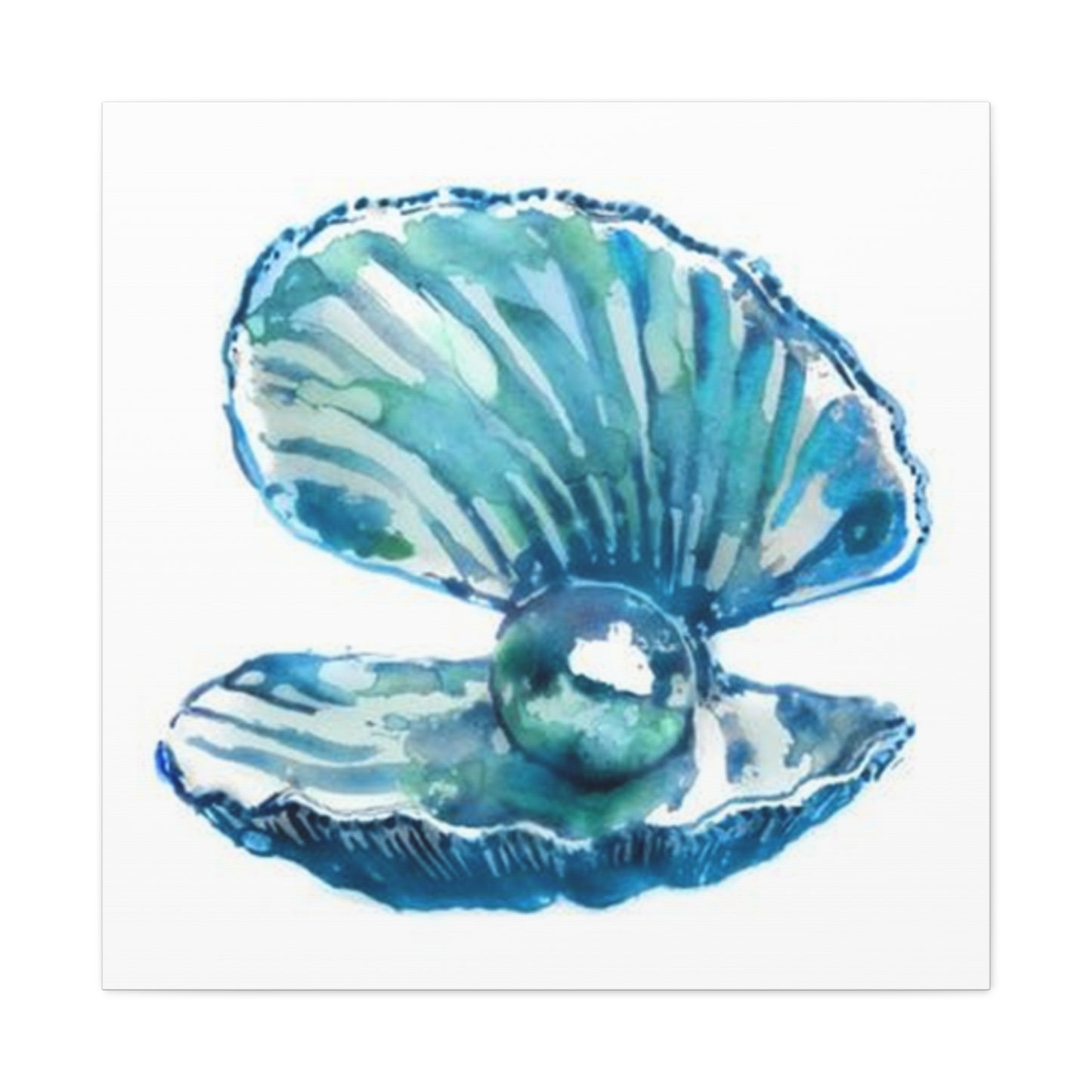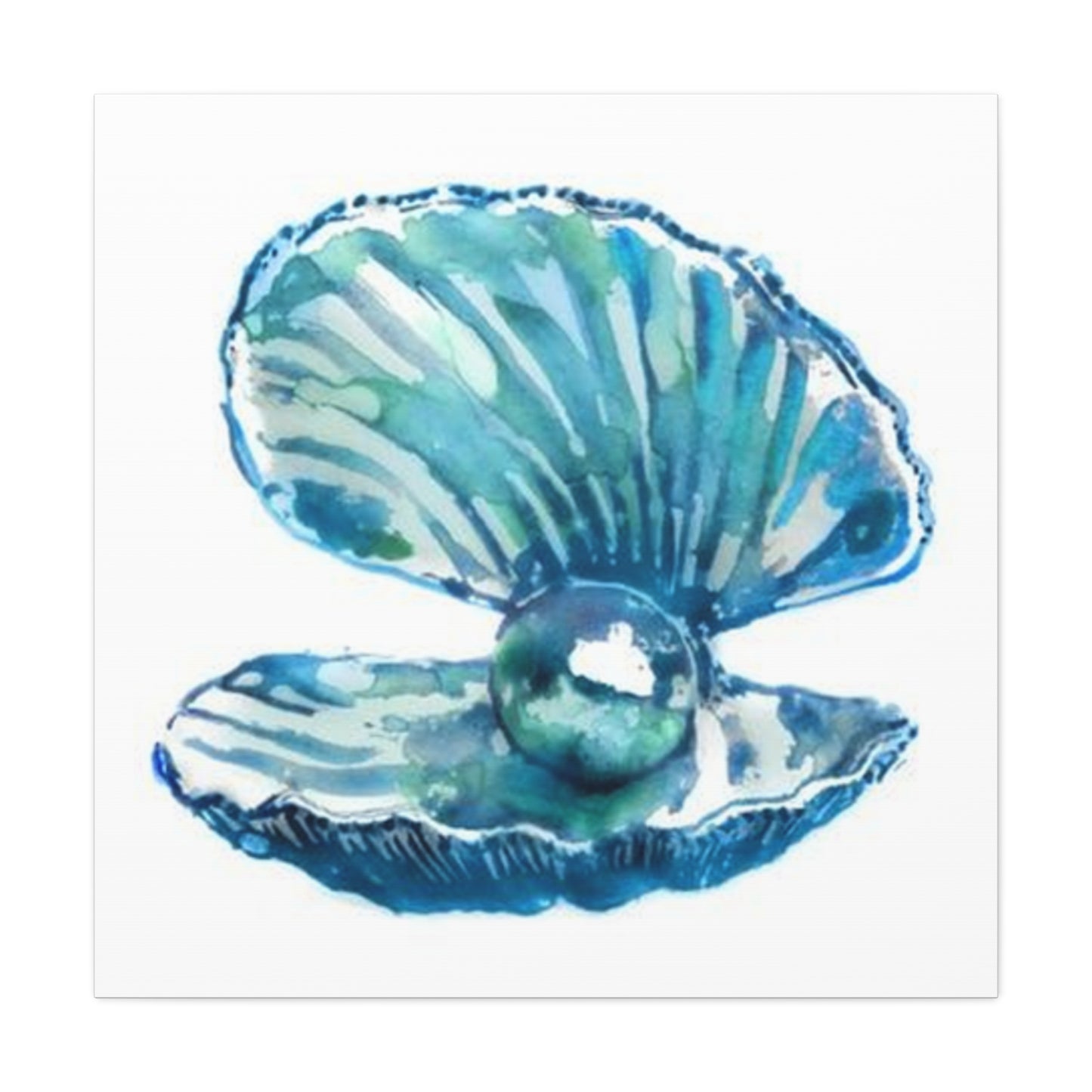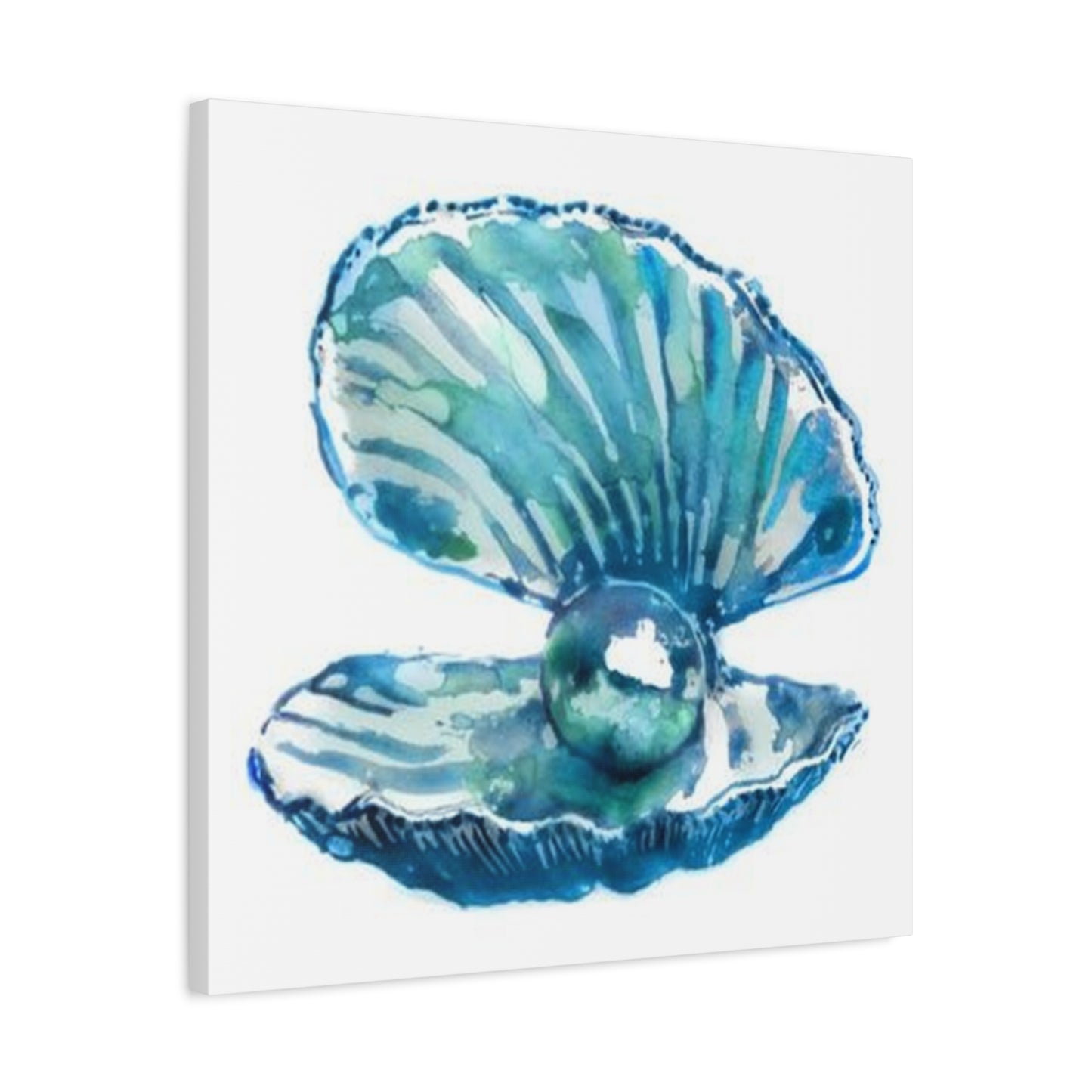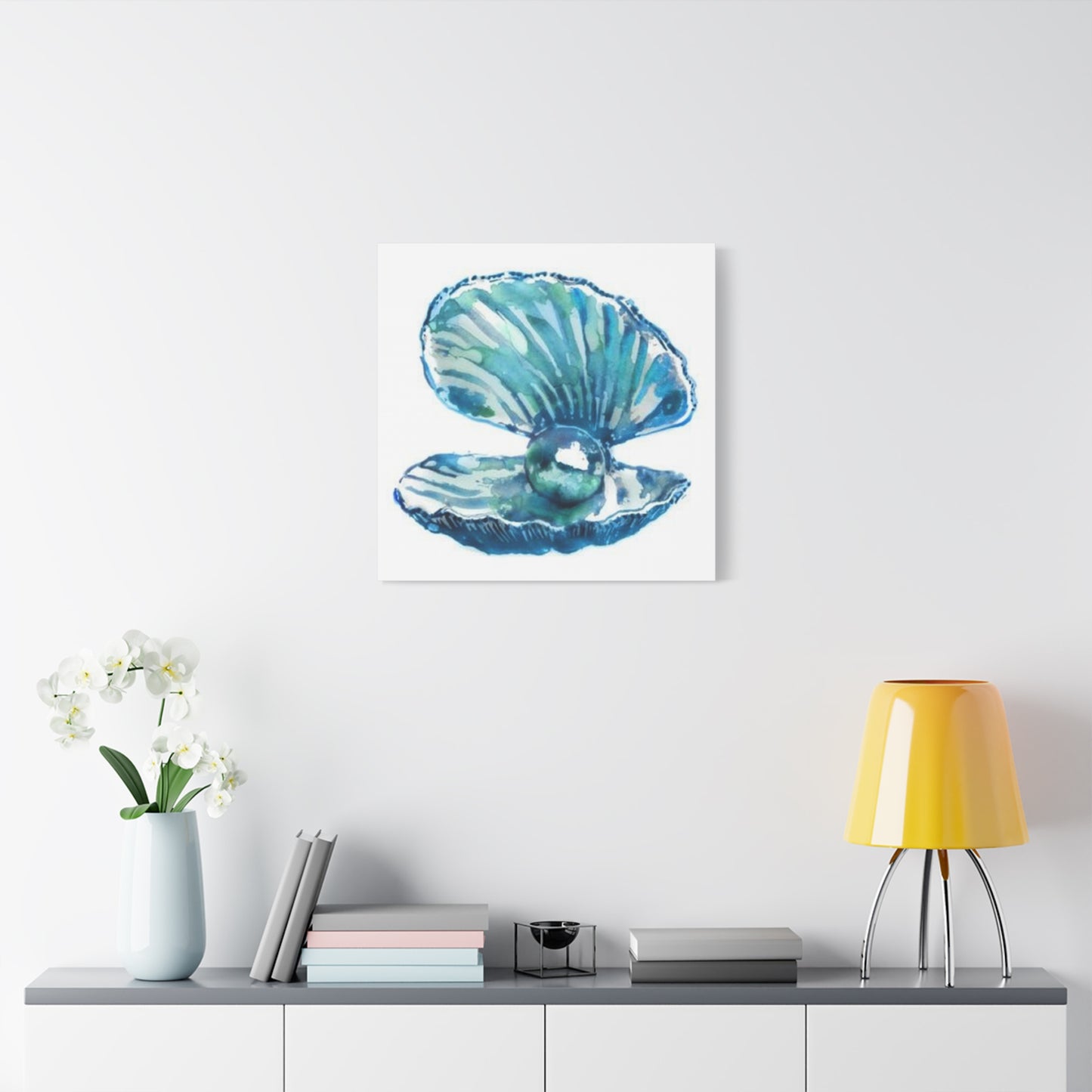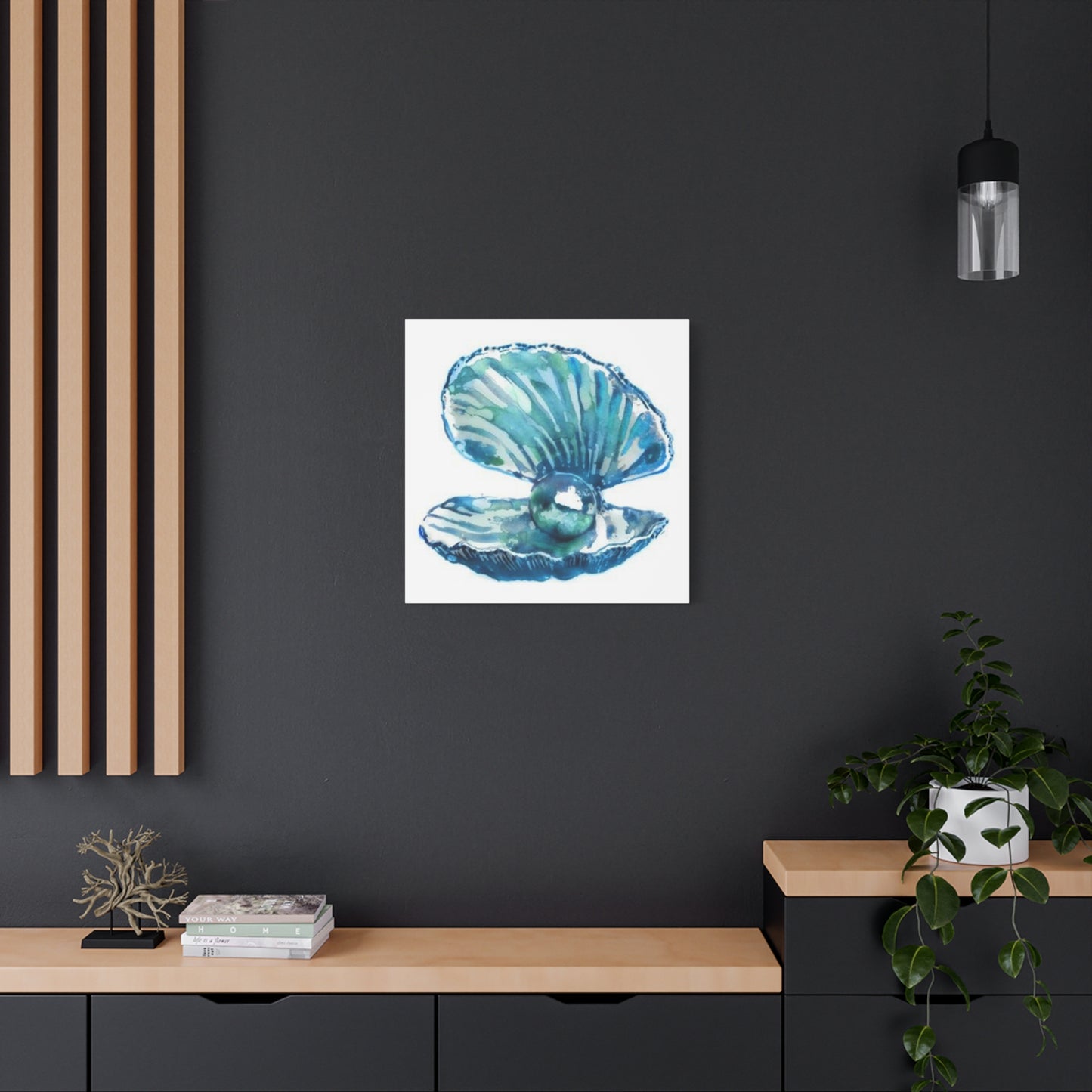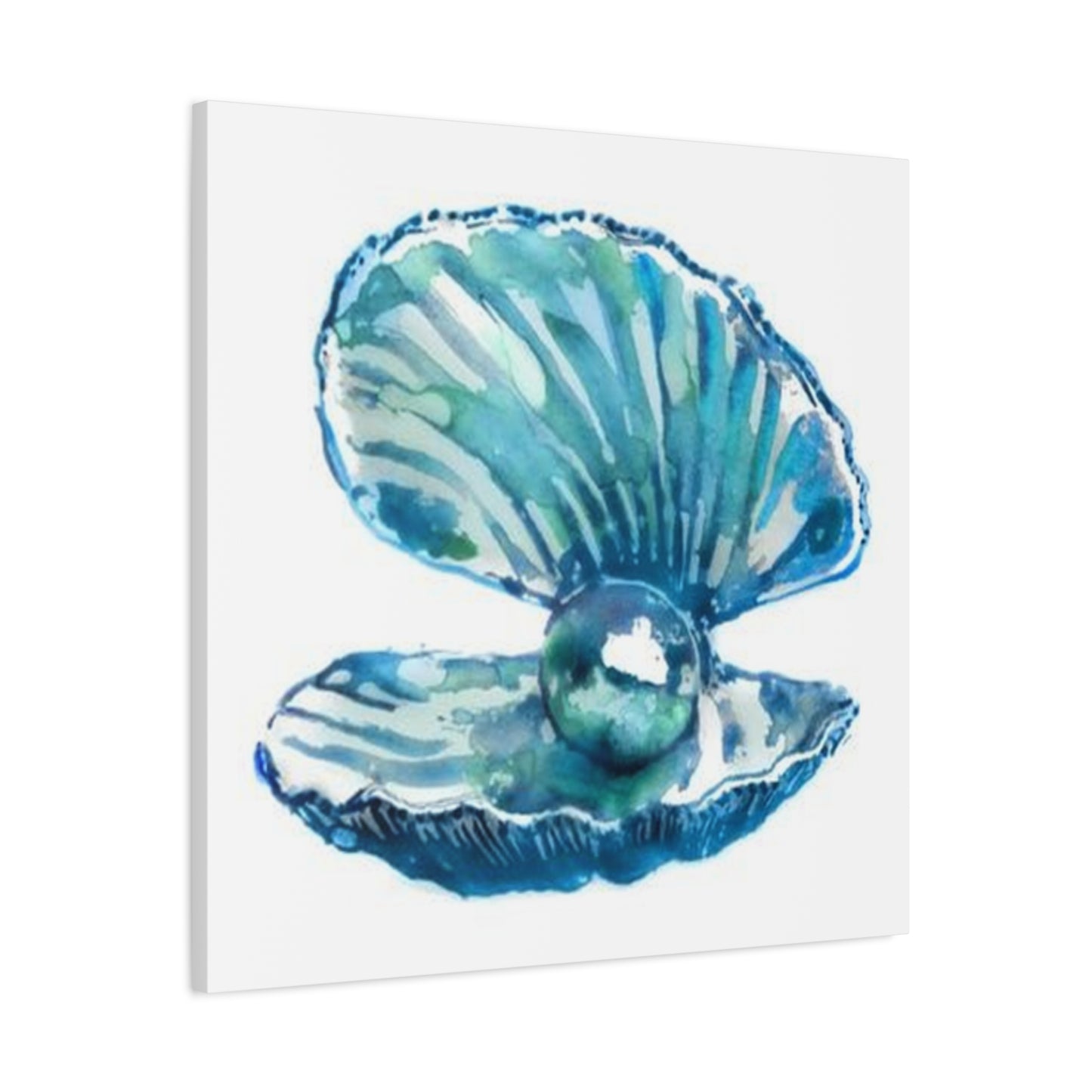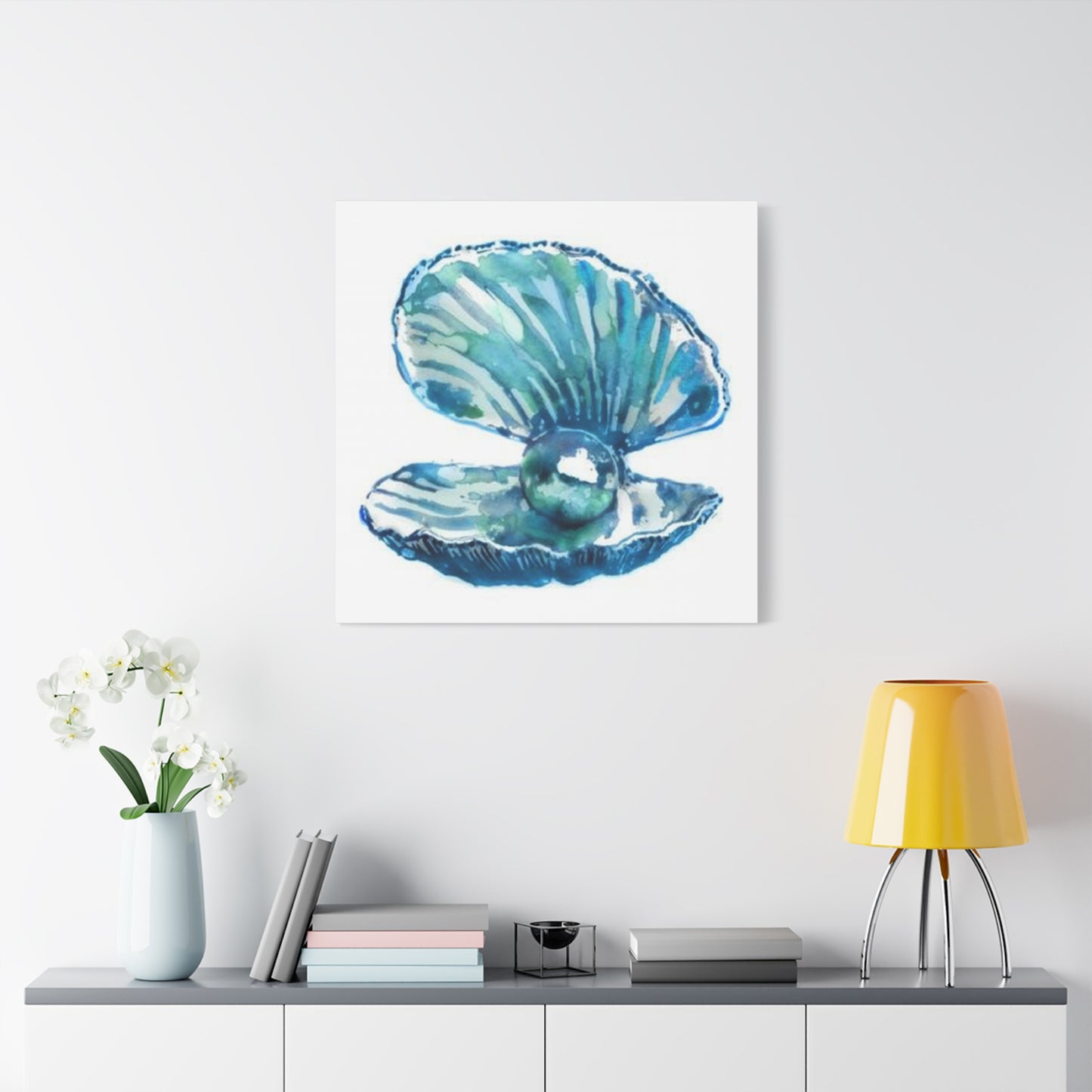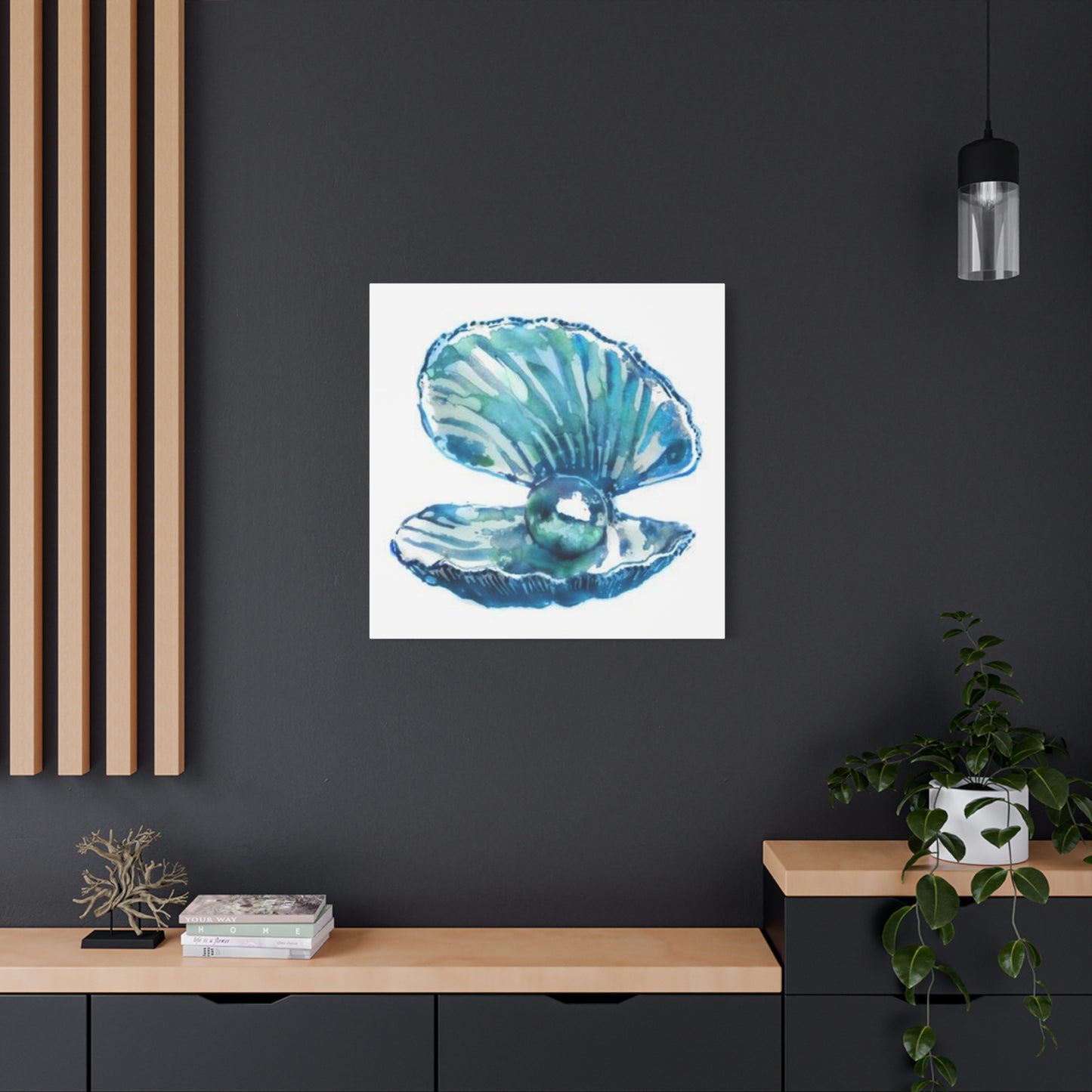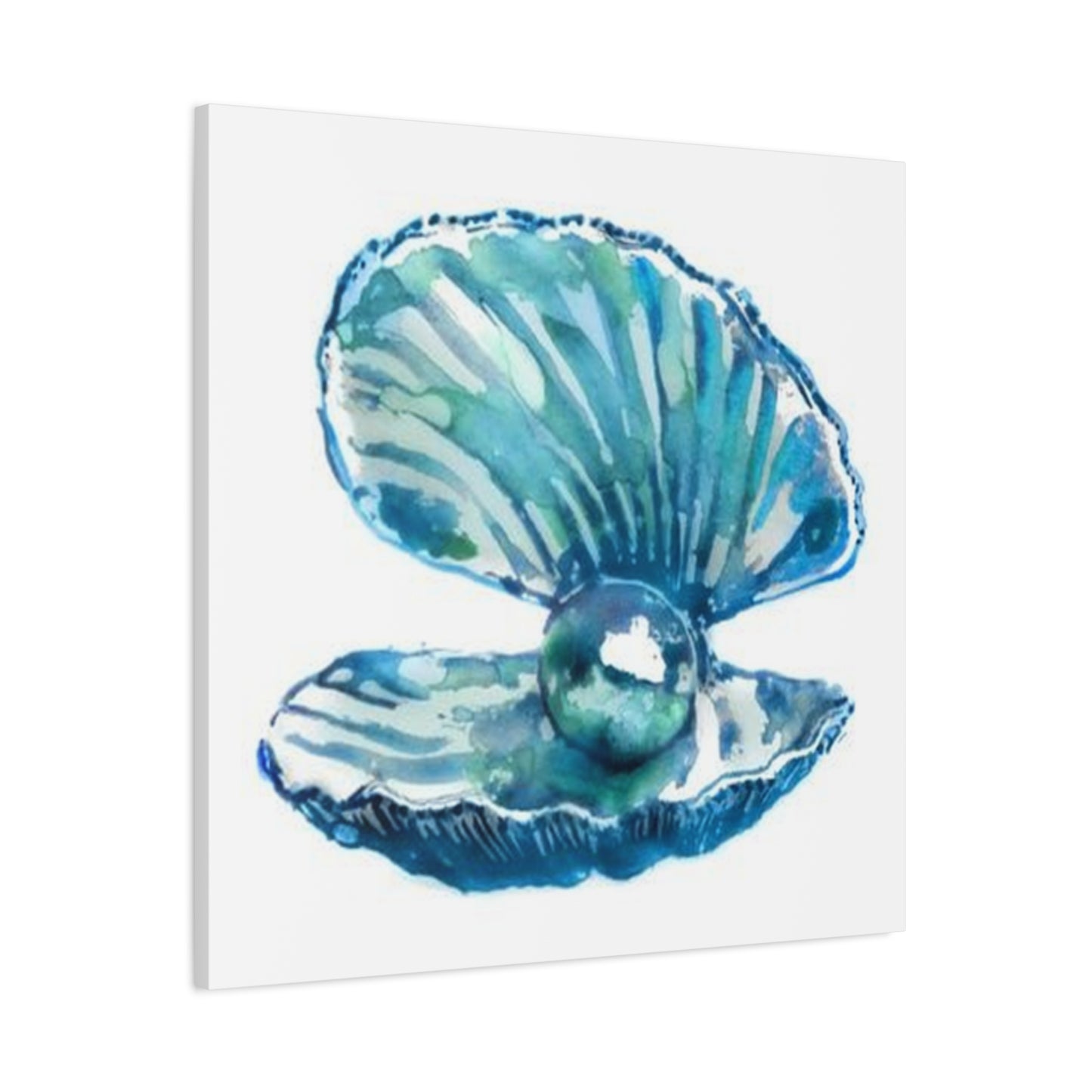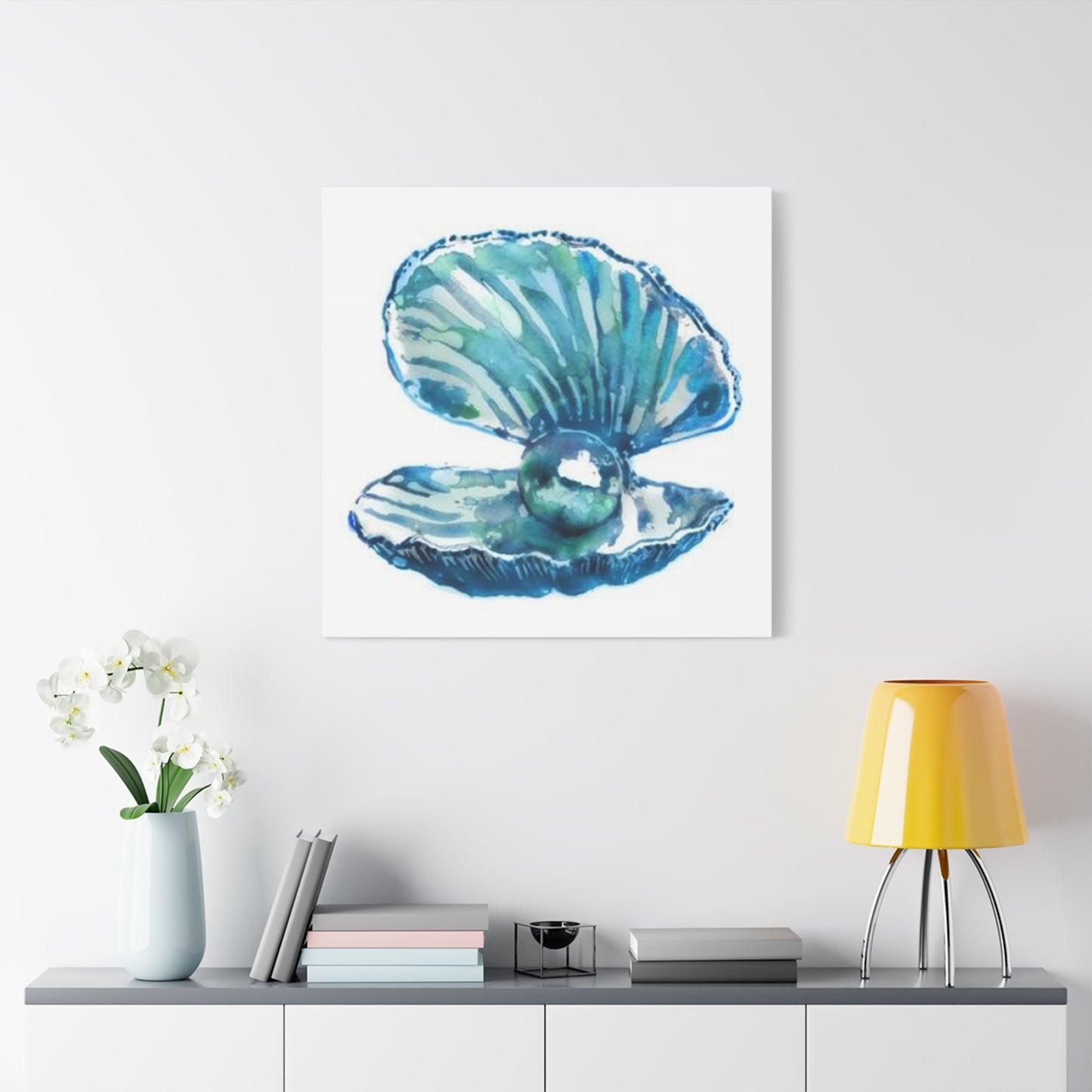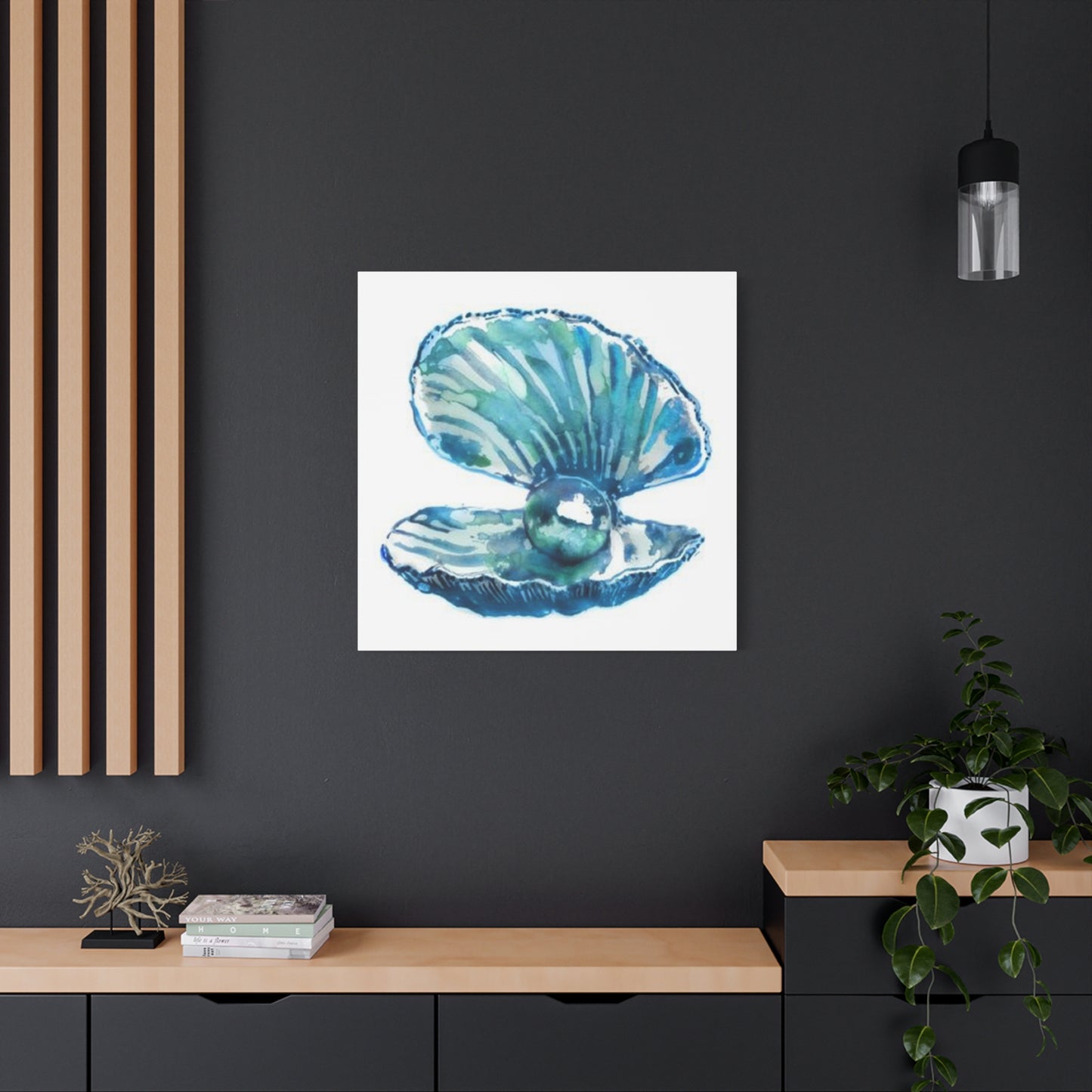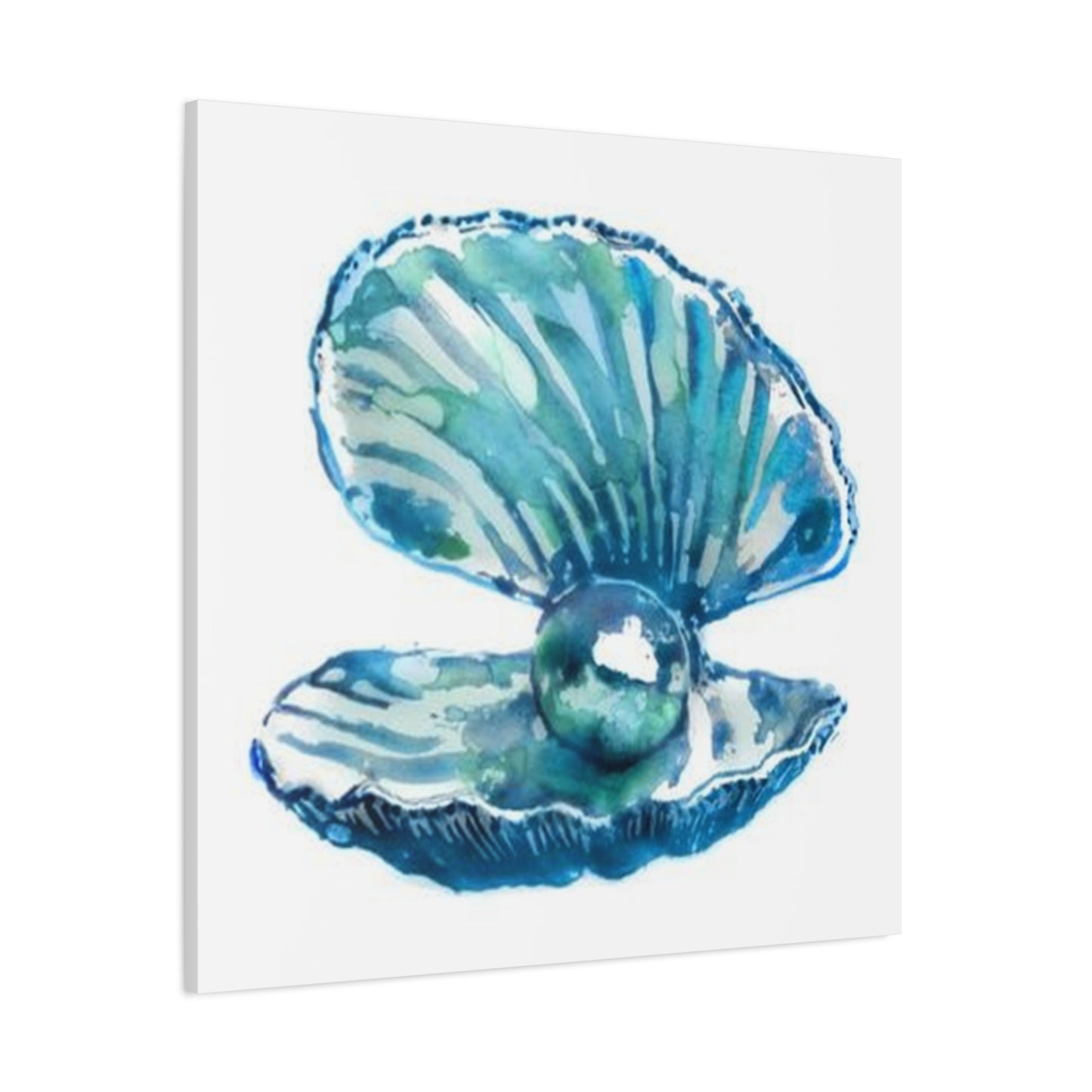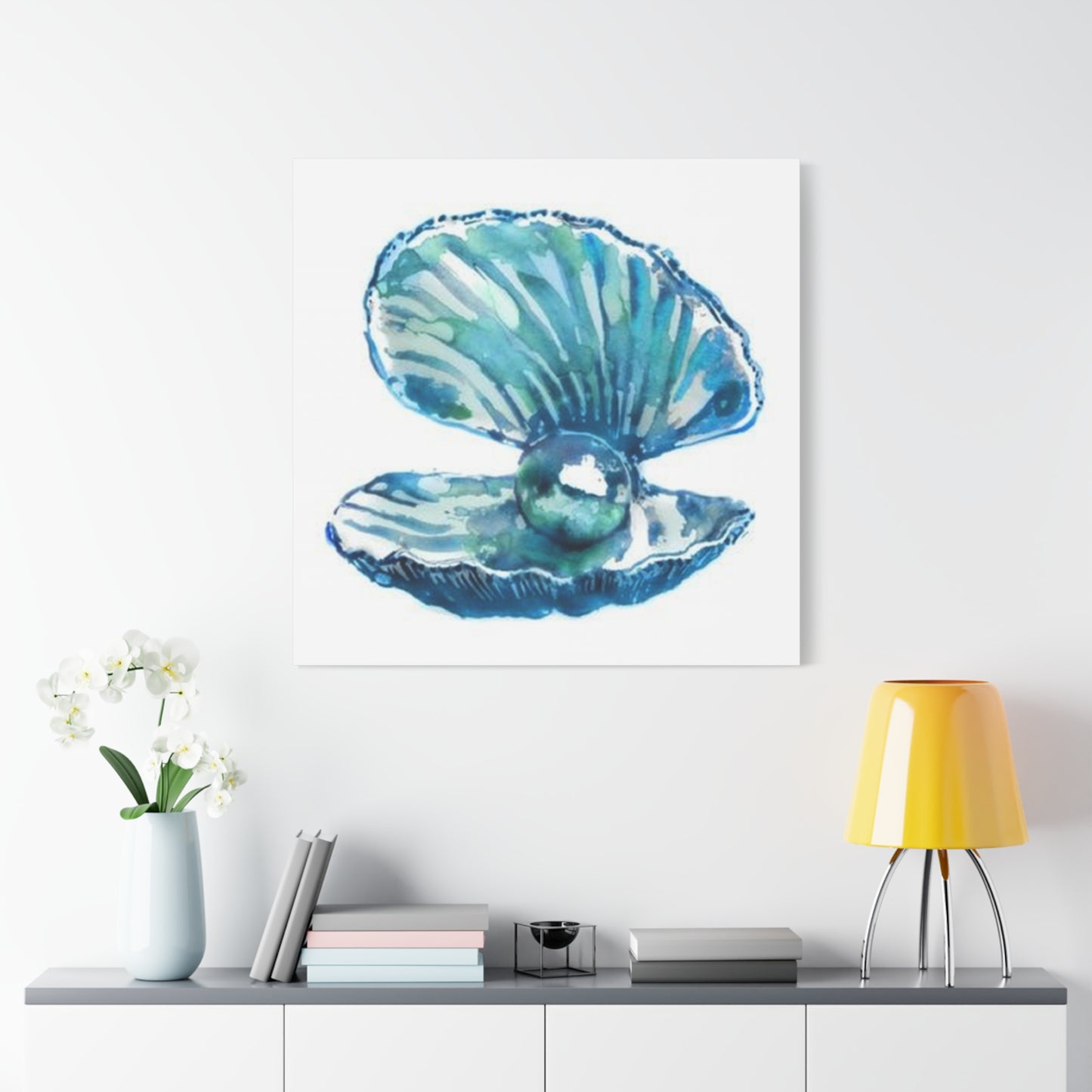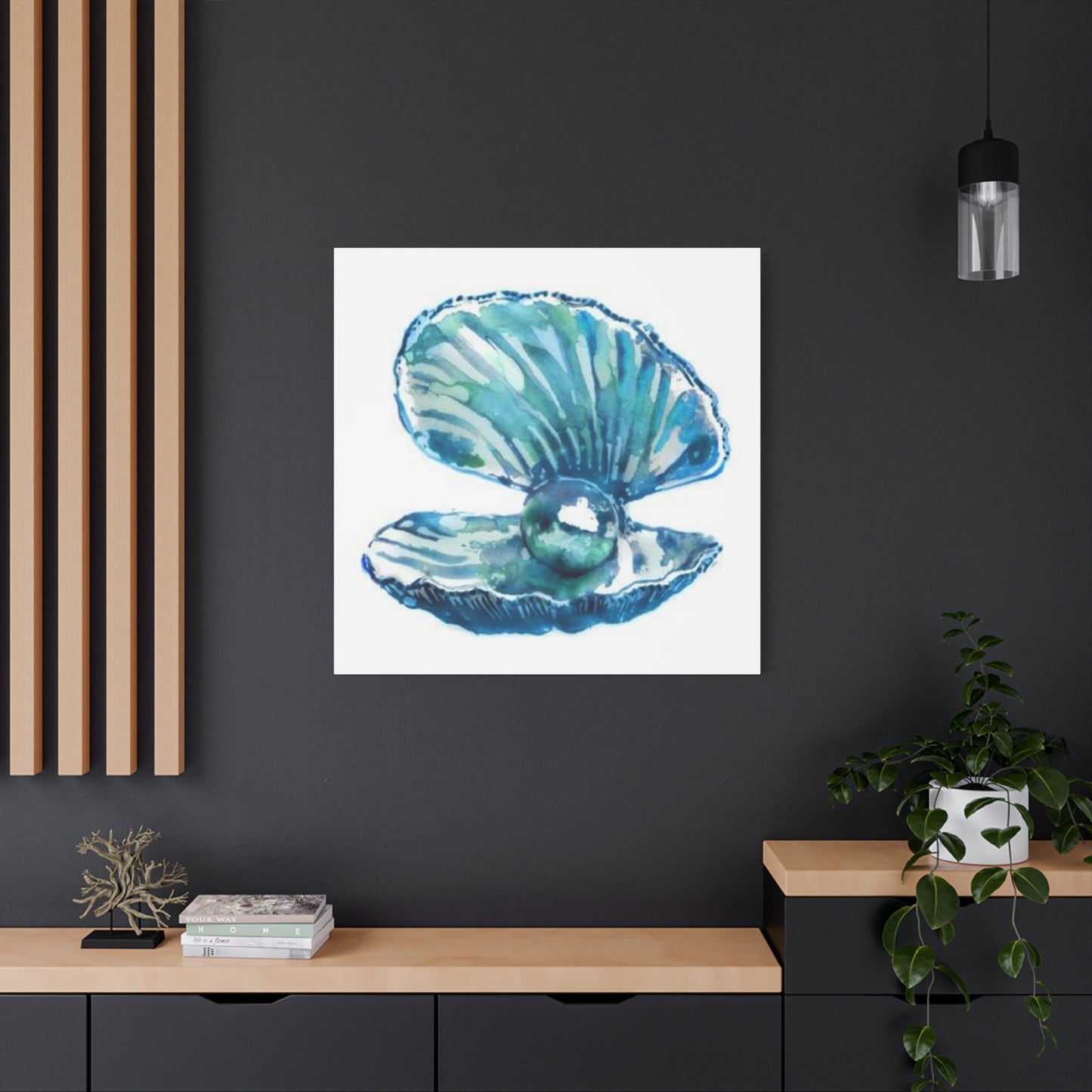Oceanic Elegance: Pearl and Shell Painting Wall Art Canvas Prints for Modern Living
The enchanting world of marine-inspired artwork has captivated homeowners and decorating enthusiasts for generations. Pearl and shell painting wall art canvas prints represent a sophisticated fusion of natural beauty and artistic expression that brings the serene essence of coastal living into any environment. These stunning visual masterpieces transform ordinary rooms into extraordinary sanctuaries that celebrate the timeless allure of ocean treasures.
Contemporary households increasingly seek distinctive decorative elements that reflect personal style while creating harmonious atmospheres. Pearl and shell painting wall art canvas prints offer an exceptional solution for those desiring to incorporate the calming influence of marine aesthetics into their living environments. The intricate details captured in these artistic renditions showcase the remarkable textures, lustrous surfaces, and organic forms that make shells and pearls such captivating natural specimens.
The appeal of these maritime-themed artworks extends beyond mere decoration, offering viewers an opportunity to connect with nature's most precious underwater gems. Each canvas print captures the subtle gradations of color, the delicate interplay of light and shadow, and the mesmerizing patterns that characterize these oceanic treasures. From the iridescent gleam of mother-of-pearl surfaces to the spiraling chambers of nautilus shells, these artistic interpretations celebrate the mathematical precision and organic beauty found beneath the waves.
Modern printing technologies have revolutionized the way we experience and display artistic representations of natural subjects. High-quality canvas prints now offer unprecedented color accuracy, exceptional detail resolution, and remarkable longevity that ensures these marine-inspired artworks maintain their visual impact for years to come. The combination of archival inks, premium canvas materials, and professional printing processes creates museum-quality reproductions that rival original paintings in their visual presence and emotional impact.
Historical Significance of Marine-Inspired Artwork
The fascination with marine subjects in artistic expression traces back to ancient civilizations that recognized the symbolic and aesthetic value of oceanic elements. Pearl and shell motifs have appeared in decorative arts across cultures, from ancient Egyptian jewelry to Renaissance still-life paintings. These natural treasures have consistently represented wealth, purity, transformation, and the mysterious depths of the ocean realm.
Throughout history, artists have been drawn to the challenge of capturing the translucent qualities of pearls and the intricate geometries of seashells. The Dutch Golden Age painters excelled at depicting these subjects with remarkable realism, creating works that celebrated both the beauty of natural forms and the technical skill required to render them convincingly. Their legacy continues to influence contemporary artists who work in digital mediums to create stunning canvas prints.
The symbolism associated with pearls and shells extends across numerous cultures and belief systems. In many traditions, pearls represent wisdom gained through experience, while shells symbolize protection, femininity, and the cyclical nature of life. These rich symbolic associations add layers of meaning to pearl and shell painting wall art canvas prints, making them more than mere decorative objects but meaningful additions to living environments.
Ancient civilizations valued these marine treasures not only for their beauty but also for their rarity and the difficulty involved in obtaining them. This historical context adds depth to contemporary artistic interpretations, connecting modern viewers with thousands of years of human fascination with oceanic beauty. The enduring appeal of these subjects speaks to their fundamental ability to evoke emotional responses and create connections between humans and the natural world.
The evolution of artistic techniques for depicting translucent and reflective surfaces has paralleled advances in understanding light, color theory, and optical phenomena. Renaissance masters developed sophisticated methods for capturing the lustrous qualities of pearls, while contemporary digital artists employ cutting-edge software to achieve even greater levels of realism and artistic expression in their shell and pearl compositions.
Artistic Techniques in Pearl and Shell Representation
Creating convincing artistic representations of pearls and shells requires mastery of several challenging technical skills. Artists must understand how light interacts with curved surfaces, how to render transparency and translucency, and how to capture the subtle color variations that give these subjects their distinctive character. The interplay between direct illumination, reflected light, and subsurface scattering creates the luminous quality that makes pearls so captivating.
Shell structures present their own unique challenges for artistic interpretation. The spiral geometries of nautilus shells follow mathematical principles that artists must understand to create believable representations. The layered construction of shell walls, with their alternating opaque and translucent sections, requires careful observation and technical skill to render convincingly. Surface textures, from smooth nacre to rough exterior shells, demand different approaches and techniques.
Color theory plays a crucial role in successful pearl and shell artwork. The iridescent qualities of these subjects involve subtle shifts between complementary colors, often within very small areas. Artists must understand how to use warm and cool color relationships to create the sense of dimensionality and luminosity that characterizes these marine treasures. The ability to suggest color variations without overstating them is essential for maintaining the delicate beauty of these subjects.
Contemporary digital artists working on canvas print designs have access to tools and techniques that allow for unprecedented precision in rendering these challenging subjects. Advanced painting software provides sophisticated brush engines that can simulate the subtle gradations and complex surface qualities that characterize pearls and shells. Layer blending modes, custom brush textures, and digital color mixing capabilities enable artists to achieve effects that would be extremely difficult using traditional media alone.
The composition of pearl and shell artwork involves careful consideration of arrangement, lighting, and background elements. Successful pieces often employ principles of classical still-life painting, using dramatic lighting to emphasize form and texture while creating compelling visual narratives. The arrangement of multiple specimens can create rhythmic patterns and visual flow that guide the viewer's eye through the composition in satisfying ways.
Types of Pearl Varieties in Artistic Representation
Natural pearls offer artists a diverse palette of forms, colors, and surface characteristics to explore in their creative works. Akoya pearls, known for their perfectly round shapes and brilliant luster, provide subjects for compositions emphasizing classical beauty and symmetry. These cultivated gems display the highest levels of surface reflectivity, creating challenging but rewarding subjects for artists seeking to capture dramatic light effects.
South Sea pearls, with their larger sizes and distinctive golden and silver colorations, offer opportunities for artists to explore different scales and color relationships in their compositions. The subtle variations in these pearls' surfaces, from smooth perfection to interesting baroque irregularities, provide rich material for artistic interpretation. Their substantial presence makes them ideal focal points for dramatic compositions that emphasize luxury and natural beauty.
Tahitian pearls introduce darker, more mysterious elements into pearl artwork, with their characteristic dark bodies and spectacular overtones of green, purple, and blue. These exotic specimens challenge artists to work with more complex color relationships while maintaining the luminous quality that defines successful pearl representation. The contrast between dark body colors and brilliant overtones creates opportunities for dramatic lighting effects and sophisticated color harmonies.
Freshwater pearls offer the greatest diversity of shapes, sizes, and colors, making them versatile subjects for artistic exploration. From tiny seed pearls to large baroque specimens, these cultivated gems provide artists with numerous options for creating interesting compositions. Their often irregular shapes and varied surface textures allow for more expressive, less formal artistic approaches that emphasize natural variation and organic beauty.
Baroque pearls, with their irregular, non-spherical shapes, offer unique opportunities for artistic creativity. These natural formations suggest organic forms, creatures, or abstract shapes that artists can emphasize or interpret in their work. The unpredictable surface variations and unusual proportions of baroque pearls make them compelling subjects for contemporary artistic interpretations that celebrate natural irregularity and uniqueness.
Shell Classifications and Artistic Applications
Gastropod shells, including the familiar spiraling forms of snails and conchs, provide artists with some of the most mathematically fascinating subjects in the natural world. The logarithmic spirals that characterize these shells follow precise mathematical relationships that create inherently pleasing proportions and visual flow. Artists working with these subjects can emphasize the geometric beauty while celebrating the organic variations that make each specimen unique.
Bivalve shells, such as scallops, oysters, and clams, offer different artistic opportunities through their hinged construction and varied surface textures. The fan-like ridges of scallop shells create natural patterns that artists can use to explore rhythm, repetition, and visual texture. The contrast between smooth inner surfaces and textured exteriors provides opportunities for exploring different rendering techniques within single compositions.
Cephalopod shells, particularly the chambered nautilus, represent some of the most iconic subjects in marine-inspired artwork. The perfect spiral chambers, visible through cross-sections, demonstrate nature's mathematical precision while providing compelling visual elements for artistic composition. The contrast between the pearlescent inner chambers and the exterior shell patterns creates rich opportunities for exploring different surface treatments and lighting effects.
Exotic shells from tropical waters offer artists access to extraordinary colors, patterns, and forms that push the boundaries of believability. Murex shells with their elaborate spines, cone shells with their geometric patterns, and cowrie shells with their polished surfaces each present unique challenges and opportunities for artistic interpretation. These specimens allow artists to explore more dramatic color palettes and unusual compositional arrangements.
Microscopic shells and shell fragments provide subjects for highly detailed, almost abstract artistic compositions. Foraminifera and other tiny marine organisms create intricate patterns and textures that can be enlarged and interpreted artistically to create fascinating abstract designs. These subjects bridge the gap between scientific illustration and pure artistic expression, offering unique possibilities for contemporary canvas print designs.
Color Theory in Marine-Inspired Artwork
Understanding the complex color relationships present in pearl and shell subjects requires deep knowledge of color theory principles and their practical applications. The iridescent qualities of nacre involve simultaneous contrast effects, where colors appear to shift based on surrounding hues and viewing angles. Artists must master techniques for suggesting these dynamic color relationships while maintaining overall compositional harmony and visual coherence.
The primary colors found in shell and pearl subjects often involve subtle variations of earth tones, combined with brilliant accent colors that appear in highlights and reflections. Successful artwork balances these muted base colors with more saturated accent areas to create visual interest without overwhelming the delicate beauty of the subjects. Understanding how warm and cool colors interact helps artists create the sense of dimensionality essential for convincing three-dimensional representation.
Complementary color relationships play crucial roles in pearl and shell artwork, particularly in creating the sense of luminosity that characterizes these subjects. The interplay between warm highlights and cool shadows, or between orange nacre and blue reflected light, creates visual vibration and energy that brings these subjects to life. Mastering these relationships requires careful observation and extensive experimentation with color mixing techniques.
Analogous color schemes, using closely related hues, often prove most effective for maintaining the subtle beauty that characterizes the finest pearl and shell artwork. These harmonious color relationships create unified visual experiences while allowing for sufficient variation to maintain interest and suggest the complex surface characteristics of these natural subjects. The key lies in finding the right balance between unity and variety.
The psychological effects of different color combinations influence how viewers respond to pearl and shell artwork. Cool color dominance creates calming, meditative effects that align with the peaceful associations of marine subjects. Warmer color relationships can suggest sunset lighting or tropical waters, creating more energetic and exotic feelings. Understanding these psychological associations helps artists create works that achieve specific emotional goals.
Lighting Techniques for Enhanced Visual Impact
Dramatic lighting serves as one of the most powerful tools available to artists working with pearl and shell subjects. The reflective and translucent qualities of these materials respond dramatically to different lighting approaches, allowing artists to create vastly different moods and visual effects through careful light manipulation. Understanding how light behaves when interacting with curved, reflective surfaces enables artists to create more convincing and compelling artwork.
Rim lighting techniques can emphasize the three-dimensional qualities of shells and pearls by creating bright edge highlights that separate subjects from their backgrounds. This approach works particularly well with darker backgrounds, creating dramatic silhouettes that emphasize form while maintaining the luminous quality essential to these subjects. The contrast between illuminated edges and darker core areas creates visual depth and dimensional presence.
Transmitted light effects, where illumination passes through translucent areas of shells and pearls, create some of the most magical qualities in marine-inspired artwork. These effects require careful observation of how light behaves when passing through different material thicknesses and compositions. The warm glows that result from transmitted light add life and energy to compositions while demonstrating the artist's technical understanding of optical phenomena.
Multiple light source arrangements allow artists to create complex lighting scenarios that reveal different aspects of their subjects simultaneously. Combining directional light with fill illumination and reflected light creates rich, nuanced lighting that brings out surface details while maintaining overall form definition. These sophisticated lighting approaches separate professional-quality artwork from simpler, less developed pieces.
Colored lighting effects can transform the appearance of pearl and shell subjects, creating exotic and dramatic visual experiences. Warm candlelight effects suggest intimate, luxurious settings, while cool moonlight creates mysterious, ethereal moods. Understanding how colored light interacts with the natural colors of these subjects allows artists to create specific atmospheric effects that enhance the overall impact of their compositions.
Composition Principles for Marine Subjects
Successful composition in pearl and shell artwork requires careful consideration of arrangement, balance, and visual flow. The organic shapes and natural proportions of these subjects lend themselves to both classical and contemporary compositional approaches. Understanding how to arrange multiple elements to create compelling visual narratives while maintaining focus on key subjects represents a crucial skill for artists working in this genre.
The rule of thirds applies particularly well to pearl and shell compositions, providing guidelines for placing key elements in visually pleasing positions. However, the organic nature of these subjects often suggests more fluid, natural arrangements that follow the inherent flow and rhythm of marine forms. Balancing classical compositional principles with organic naturalism creates the most successful artwork in this category.
Scale relationships between different elements within compositions create hierarchy and visual interest while maintaining believable proportional relationships. Combining large featured specimens with smaller supporting elements creates depth and variety without overwhelming the primary subjects. Understanding how size relationships affect visual weight and viewer attention helps artists create more effective compositions.
Negative space usage in pearl and shell artwork contributes significantly to overall visual impact and emotional effect. Generous use of background areas allows subjects to breathe and maintains focus on their inherent beauty. However, completely empty backgrounds can appear sterile, so incorporating subtle textures, gradations, or suggestion of environment often enhances rather than detracts from the main subjects.
Rhythmic arrangements of multiple shells or pearls create visual movement and energy that guides viewers through compositions in satisfying ways. These rhythms can follow mathematical progressions, natural growth patterns, or more intuitive artistic arrangements. Understanding how repetition, variation, and progression work together helps artists create dynamic compositions that maintain viewer interest over extended viewing periods.
Contemporary Digital Art Techniques
Modern digital painting software provides artists with unprecedented capabilities for creating realistic and expressive pearl and shell artwork. Advanced brush engines can simulate traditional painting techniques while offering new possibilities for texture creation, color blending, and detail work. Understanding how to leverage these digital tools effectively allows contemporary artists to achieve results that surpass traditional media in some applications.
Layer-based workflows enable complex lighting and surface effect development that would be extremely difficult using traditional techniques. Artists can separate different aspects of their subjects onto individual layers, allowing for independent adjustment and refinement of highlights, shadows, surface details, and background elements. This non-destructive approach facilitates experimentation and refinement throughout the creative process.
Custom brush creation allows artists to develop specialized tools for rendering specific surface textures and patterns found in shells and pearls. Brushes that simulate nacre textures, shell ridges, or surface irregularities can dramatically speed the creation process while ensuring consistent, professional results. Building libraries of specialized brushes becomes an valuable investment for artists focusing on marine subjects.
Digital color mixing techniques provide more precise control over subtle color relationships than traditional media in many cases. The ability to sample colors precisely, adjust saturation and brightness independently, and create smooth gradations enables artists to achieve the subtle color variations that characterize successful pearl and shell artwork. Understanding digital color models and their applications helps artists make informed decisions about color choices.
Advanced selection and masking techniques allow for precise control over which areas of artwork receive specific treatments. This capability proves particularly valuable when working with complex subjects that require different rendering approaches for various surface areas. The ability to create and modify selections non-destructively provides flexibility throughout the creative process.
Canvas Print Production Methods
High-quality canvas print production involves several crucial technical considerations that affect the final appearance and longevity of pearl and shell artwork. Understanding these production aspects helps both artists and consumers make informed decisions about print specifications and expected results. The choice of canvas material, ink systems, and finishing processes significantly impacts the visual quality and durability of finished prints.
Canvas material selection affects both the appearance and archival qualities of finished prints. Premium cotton canvases provide superior ink absorption and color stability compared to synthetic alternatives, while maintaining the traditional texture and feel associated with fine art reproduction. The weave pattern and surface preparation of canvas materials influence how fine details reproduce and how colors appear in the finished print.
Ink technology represents perhaps the most critical factor in producing exceptional canvas prints of pearl and shell artwork. Pigment-based ink systems provide superior color stability and resistance to fading compared to dye-based alternatives. The color gamut capabilities of different ink systems determine how accurately the subtle color variations in these subjects can be reproduced, making ink selection crucial for maintaining artistic integrity.
Printing resolution and color management protocols ensure that the subtle details and color relationships in pearl and shell artwork transfer accurately from digital files to physical prints. High-resolution printing capabilities capture fine surface textures and smooth color gradations that define successful reproduction of these challenging subjects. Professional color management ensures consistency between the artist's original vision and the finished print.
Protective coatings and finishing processes enhance both the appearance and longevity of canvas prints. UV-resistant coatings prevent color shifting and degradation over time, while surface treatments can enhance or modify the apparent texture and reflectivity of the finished print. Understanding these options helps consumers select prints that will maintain their appearance and value over extended periods.
Framing and Display Considerations
Proper framing significantly enhances the visual impact and preservation of pearl and shell canvas prints while complementing their inherent beauty. Frame selection should support rather than compete with the artwork, taking into account the colors, style, and scale of the piece. Understanding how different framing approaches affect the perception and preservation of these marine-inspired artworks helps ensure optimal presentation results.
Matting options for canvas prints require careful consideration of color relationships and proportional balance. Neutral colors typically work best with pearl and shell subjects, avoiding competition with the subtle color variations in the artwork itself. The width of matting affects the apparent scale and importance of the artwork, with generous matting creating more formal, gallery-like presentations.
Glazing choices for framed canvas prints involve balancing protection with visual clarity. Anti-reflective glazing minimizes surface reflections that can interfere with viewing these luminous subjects, while UV-filtering properties protect against long-term color degradation. Understanding the trade-offs between different glazing options helps achieve optimal display results for specific viewing environments.
Lighting design for displaying pearl and shell artwork requires attention to both the quality and direction of illumination. These subjects respond particularly well to warm, diffused lighting that enhances their natural luminosity without creating harsh reflections or shadows. Understanding how different lighting approaches affect the appearance of these artworks helps create optimal viewing conditions.
Environmental factors such as humidity, temperature, and air quality affect the long-term preservation of canvas prints. Pearl and shell artwork, with its often light color palette, shows environmental damage more readily than darker subjects. Understanding proper environmental controls helps preserve these investments while maintaining their visual appeal over extended periods.
Room Integration and Styling Applications
Pearl and shell canvas prints adapt to numerous decorating styles and room functions, making them versatile additions to contemporary living environments. Their natural beauty and calming associations make them particularly suitable for bedroom and bathroom applications, where their serene qualities can enhance relaxation and tranquility. Understanding how these artworks interact with different decorating approaches helps ensure successful integration.
Coastal and nautical decorating themes provide natural contexts for pearl and shell artwork, creating cohesive design schemes that celebrate marine beauty. However, these subjects also work effectively in more sophisticated, contemporary settings where their natural forms provide organic contrast to geometric architectural elements. The key lies in understanding how to balance natural and architectural elements harmoniously.
Color coordination with existing room elements requires careful consideration of the subtle hues present in pearl and shell subjects. These artworks often work best in rooms with neutral color schemes that allow their delicate beauty to take center stage. However, they can also provide sophisticated counterpoints to bolder color schemes when used thoughtfully as accent elements.
Scale considerations affect both the visual impact and functional success of pearl and shell canvas prints in different room settings. Large-scale pieces work well as focal points in formal living areas, while smaller groupings create intimate arrangements suitable for personal areas. Understanding how artwork scale relates to room proportions and furniture arrangements helps achieve optimal design results.
Grouping and arrangement strategies for multiple pearl and shell prints can create gallery walls, themed collections, or integrated design schemes that enhance the impact of individual pieces. Understanding principles of visual balance, repetition, and variation helps create satisfying arrangements that support overall room design while celebrating the individual beauty of each artwork piece.
Therapeutic and Psychological Benefits
Research in environmental psychology demonstrates that marine-inspired imagery, including pearl and shell subjects, can produce measurable positive effects on mood, stress levels, and overall psychological well-being. The association between these natural forms and peaceful oceanic environments triggers relaxation responses that make pearl and shell canvas prints valuable additions to environments where stress reduction is a priority.
The biophilic design principles that guide contemporary architecture and decorating recognize the human need for connection with natural elements. Pearl and shell artwork satisfies this need by bringing representations of natural beauty into built environments, creating psychological connections with the natural world that enhance inhabitant satisfaction and well-being. These benefits extend beyond mere aesthetic pleasure to encompass deeper psychological needs.
Meditation and mindfulness practices often incorporate visual focus points that support contemplative states of mind. The intricate patterns, subtle color variations, and organic forms found in pearl and shell artwork provide ideal subjects for visual meditation, helping viewers achieve states of calm focus and present-moment awareness. This therapeutic application adds functional value to their decorative benefits.
Color therapy principles suggest that the cool, neutral tones typically found in pearl and shell subjects have calming, balancing effects on psychological state. These colors are associated with tranquility, cleanliness, and emotional stability, making artwork featuring these subjects particularly suitable for environments where emotional regulation and stress management are important considerations.
The symbolic associations of pearls and shells with protection, transformation, and natural wisdom provide psychological anchoring that can support personal development and emotional healing processes. Having these symbols present in living environments serves as gentle reminders of resilience, growth, and the beauty that can emerge from challenging circumstances, providing ongoing psychological support for inhabitants.
Market Trends and Consumer Preferences
Contemporary art markets show increasing demand for nature-inspired subjects as consumers seek to create more harmonious, biophilically designed living environments. Pearl and shell canvas prints benefit from this trend, as their combination of natural beauty and sophisticated artistic treatment appeals to consumers across diverse demographic categories. Understanding these market dynamics helps both artists and retailers position their offerings effectively.
Quality expectations for canvas prints have risen significantly as printing technology has advanced and become more accessible. Consumers now expect museum-quality reproduction standards, archival longevity, and professional presentation for art purchases in all price ranges. Meeting these elevated expectations requires attention to every aspect of production, from image quality to materials and finishing processes.
Customization options increasingly influence consumer purchasing decisions, with buyers seeking artwork that can be tailored to specific size requirements, color preferences, or framing specifications. The ability to offer pearl and shell artwork in multiple sizes, orientations, and finish options provides competitive advantages in contemporary art markets while meeting diverse consumer needs.
Online marketing and e-commerce considerations significantly impact how pearl and shell canvas prints reach their intended audiences. High-quality product photography, detailed descriptions, and comprehensive sizing information help consumers make confident purchasing decisions when buying artwork online. Understanding these requirements helps ensure successful online sales results.
Seasonal and cyclical trends affect demand patterns for marine-inspired artwork, with peak interest typically occurring during spring and summer months when consumers are most receptive to oceanic themes. However, the year-round appeal of these subjects provides stability that makes them reliable choices for both consumers and retailers throughout annual sales cycles.
Care and Maintenance Guidelines
Proper care and maintenance procedures ensure that pearl and shell canvas prints retain their visual appeal and value over extended periods. Understanding how to clean, protect, and display these artworks helps consumers maximize their investment while preserving their beauty for future enjoyment. Regular maintenance routines prevent minor issues from developing into serious problems that could damage or devalue the artwork.
Cleaning procedures for canvas prints require gentle techniques that remove dust and surface contaminants without damaging the printed surface or canvas texture. Soft brushes, microfiber cloths, and minimal moisture help maintain cleanliness without introducing risks of staining, color bleeding, or physical damage. Understanding proper cleaning techniques prevents well-intentioned maintenance from causing harm.
Environmental protection strategies help shield canvas prints from factors that can cause long-term degradation. Avoiding direct sunlight, maintaining stable temperature and humidity levels, and protecting from airborne contaminants help preserve both the colors and structural integrity of these artworks. Understanding environmental risks helps consumers create optimal display conditions.
Storage procedures for canvas prints not currently on display require attention to protection from light, moisture, physical damage, and chemical contamination. Proper storage materials, positioning, and environmental controls help maintain artwork condition during periods when pieces are not actively displayed. These procedures prove particularly important for collectors who rotate their displayed artwork seasonally.
Professional conservation services provide options for addressing damage or deterioration that exceeds the scope of routine maintenance. Understanding when to seek professional help and what services are available helps consumers protect valuable artwork investments while avoiding attempts at repairs that could cause additional damage.
Educational Applications and Cultural Significance
Pearl and shell subjects provide excellent educational opportunities for teaching about marine biology, natural history, and scientific observation. Canvas prints featuring these subjects can serve as visual aids for classroom instruction, supporting lessons about ocean ecosystems, animal adaptation, and the intersection between science and art. Their aesthetic appeal helps maintain student engagement while delivering educational content.
Museum and gallery applications for pearl and shell canvas prints range from educational displays to aesthetic enhancement of exhibition areas. These subjects work well in natural history museums, aquariums, and art institutions where their dual scientific and artistic qualities provide versatile display options. Understanding institutional requirements helps artists and publishers create products suitable for these specialized markets.
Cultural and historical education benefits from pearl and shell imagery that connects contemporary viewers with the long tradition of marine-inspired art and decoration. These subjects provide entry points for discussing trade routes, cultural exchange, artistic techniques, and the historical significance of marine resources in human civilizations. This educational potential adds depth and value to decorative applications.
Scientific illustration principles apply directly to pearl and shell artwork, creating opportunities for teaching about observation, documentation, and the relationship between scientific accuracy and artistic interpretation. Students can learn fundamental skills of careful observation while developing artistic techniques, creating educational experiences that bridge science and art disciplines.
Research applications for high-quality pearl and shell imagery support scientific study, conservation efforts, and species documentation projects. Canvas prints can serve as reference materials, comparative tools, and educational resources for researchers working in marine biology, malacology, and related fields, demonstrating the practical applications of scientifically accurate artwork.
Investment and Collectibility Factors
Limited edition pearl and shell canvas prints can appreciate in value over time, particularly when created by recognized artists or produced in small quantities with appropriate documentation. Understanding the factors that contribute to collectibility helps consumers make informed decisions about art purchases while artists and publishers can structure their offerings to maximize long-term value potential.
Artist reputation and career trajectory significantly influence the investment potential of pearl and shell artwork. Works by established artists with exhibition records, critical recognition, and market presence typically maintain or appreciate in value more reliably than pieces by unknown creators. Understanding these market dynamics helps consumers evaluate investment potential alongside aesthetic considerations.
Edition size and documentation affect both the exclusivity and verification of limited edition prints. Smaller editions generally command higher prices and show better appreciation potential, while proper documentation including certificates of authenticity protects buyers and supports resale values. These factors require consideration when evaluating both current value and future potential.
Market demand factors for marine-inspired artwork include broader trends in decorating preferences, environmental consciousness, and cultural interest in oceanic themes. Understanding these larger market forces helps predict which types of pearl and shell artwork are most likely to maintain or increase in value over time, supporting informed purchasing and collecting decisions.
Condition and provenance documentation becomes increasingly important as artwork ages and potentially changes hands. Maintaining records of purchase, display history, and any conservation work supports authentication and valuation processes while protecting investment value. These considerations apply even to prints that are primarily purchased for decorative rather than investment purposes.
Technology Integration and Digital Innovation
Augmented reality applications allow consumers to visualize pearl and shell canvas prints in their actual living environments before making purchase decisions. This technology reduces uncertainty about size, color compatibility, and overall design integration while providing engaging shopping experiences that support more confident purchasing decisions. Understanding these capabilities helps both consumers and retailers leverage available tools.
Virtual gallery experiences enable broader access to pearl and shell artwork collections, allowing viewers to experience curated presentations of related pieces in simulated gallery environments. These applications provide educational value while supporting marketing efforts for artists, galleries, and publishers working with marine-inspired subjects.
Interactive educational content can accompany pearl and shell canvas prints, providing viewers with additional information about the subjects, artistic techniques, scientific background, or cultural significance. QR codes, mobile applications, and other technologies create opportunities for enriched experiences that extend beyond simple visual appreciation of the artwork.
3D printing and manufacturing technologies offer new possibilities for creating dimensional artwork that incorporates pearl and shell motifs. These emerging technologies provide alternatives to traditional canvas prints while opening new creative possibilities for artists working with marine subjects. Understanding these developments helps artists and consumers stay current with evolving possibilities.
Digital collection management tools help serious collectors organize, document, and track their pearl and shell artwork acquisitions. These applications support insurance documentation, condition monitoring, and resale preparation while providing convenient access to collection information. Understanding available tools helps collectors maintain better records and protect their investments.
Global Markets and Cultural Variations
International markets for pearl and shell canvas prints reflect different cultural attitudes toward marine imagery, artistic styles, and home decoration practices. Understanding these variations helps artists, publishers, and retailers develop appropriate products and marketing approaches for different geographical markets while respecting cultural preferences and sensitivities.
Asian markets often show strong appreciation for marine subjects due to cultural associations with prosperity, longevity, and natural harmony. Pearl and shell artwork aligns well with feng shui principles and traditional aesthetic preferences, creating favorable market conditions in many Asian countries. Understanding these cultural connections helps develop appropriate products for these markets.
European preferences for pearl and shell artwork often emphasize historical connections, artistic tradition, and sophisticated presentation. The long tradition of marine-inspired art in European culture creates informed consumer bases that appreciate both artistic quality and historical context in contemporary interpretations of these classic subjects.
North American markets typically favor versatility, contemporary styling, and integration with diverse decorating approaches. Pearl and shell canvas prints succeed in these markets when they offer flexibility in application and complement popular decorating trends. Understanding regional preferences helps optimize product development and marketing strategies.
Emerging markets present growth opportunities for pearl and shell canvas prints as increasing prosperity enables greater spending on decorative items and art. However, these markets may require different pricing structures, size preferences, and cultural adaptations to achieve success. Understanding these requirements helps expand market reach effectively.
Environmental Considerations and Sustainability
Sustainable production practices for pearl and shell canvas prints address environmental concerns while meeting consumer demand for environmentally responsible products. Using eco-friendly inks, sustainably sourced canvas materials, and minimal packaging helps reduce environmental impact while appealing to environmentally conscious consumers who represent a growing market segment.
Recycling and disposal considerations for canvas prints require attention to material composition and local waste management capabilities. Understanding how different components of canvas prints can be recycled or disposed of responsibly helps consumers make environmentally conscious decisions throughout the product lifecycle, from purchase through eventual disposal.
Carbon footprint reduction in the production and distribution of pearl and shell canvas prints can be achieved through local sourcing, efficient manufacturing processes, and optimized shipping practices. These considerations become increasingly important as consumers become more aware of environmental impacts associated with their purchases.
Alternative material options, including recycled canvas substrates and bio-based ink formulations, provide opportunities for reducing environmental impact without compromising quality or appearance. Understanding these alternatives helps both producers and consumers make more sustainable choices while maintaining high standards for artistic quality.
Conservation messaging that accompanies pearl and shell artwork can raise awareness about marine ecosystem protection and the importance of preserving the natural sources of inspiration for these artistic subjects. This educational component adds value while supporting broader environmental conservation efforts that benefit the marine environments that inspire these artworks.
Conclusion
Pearl and shell painting wall art canvas prints represent a sophisticated fusion of natural beauty, artistic skill, and contemporary production technology that brings the serene elegance of marine environments into modern living environments. These remarkable artworks offer viewers opportunities to connect with the timeless appeal of oceanic treasures while enjoying the practical benefits of high-quality canvas print reproduction that ensures lasting beauty and value.
The enduring fascination with pearls and shells reflects fundamental human responses to natural beauty, mathematical precision, and the mysterious depths of ocean environments. Contemporary artists working with these subjects continue traditions that span millennia while employing cutting-edge techniques and technologies to create works that surpass historical examples in their technical excellence and visual impact. The combination of traditional artistic principles with modern production capabilities results in artworks that honor the past while embracing contemporary possibilities.
The therapeutic and psychological benefits associated with marine-inspired imagery add functional value to the aesthetic pleasure provided by pearl and shell canvas prints. Research in environmental psychology continues to document the positive effects of natural imagery on human well-being, making these artworks valuable investments in both personal satisfaction and psychological health. The calming associations of oceanic subjects create environments that support relaxation, contemplation, and emotional balance.
Market trends toward biophilic design, environmental consciousness, and quality art reproduction create favorable conditions for continued growth in demand for pearl and shell canvas prints. Understanding these broader cultural movements helps explain the sustained appeal of these subjects while suggesting continued market opportunities for artists, publishers, and retailers working in this category. The intersection of natural beauty, artistic excellence, and contemporary lifestyle preferences positions these artworks for continued success.
The technical advances in digital art creation, canvas printing, and color reproduction continue to expand possibilities for creating exceptional pearl and shell artwork while making high-quality reproductions more accessible to diverse consumer markets. These technological improvements benefit both artists, who gain access to superior creative tools, and consumers, who can obtain museum-quality artwork at reasonable prices. The democratization of fine art through technological advancement represents a positive development for cultural enrichment.
Investment considerations for pearl and shell canvas prints reflect broader art market trends while offering specific opportunities related to the enduring appeal of marine subjects. Limited edition prints by recognized artists can appreciate in value while providing ongoing aesthetic pleasure, making them attractive options for collectors seeking to combine investment potential with personal enjoyment. Understanding market factors helps inform purchasing decisions that balance aesthetic preferences with financial considerations.

















